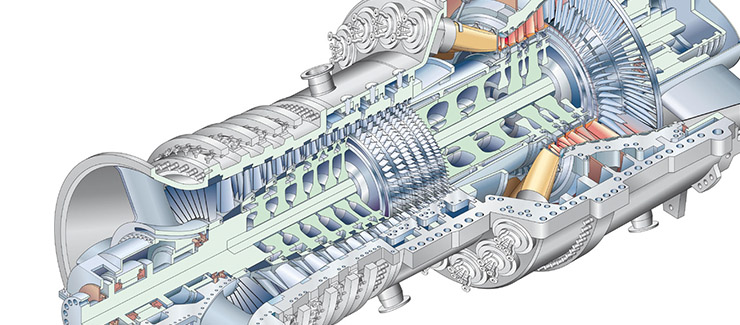Technology Focus Areas Overview

A diverse collection of energy technologies and integrated systems are required to achieve U.S. DOE goals. NETL energy analyses examine technologies across the Clean Coal and Carbon Management Program, both individually and collectively, to assess potential costs, benefits, risks, uncertainties, and timeframes in support of RD&D programs.
Advanced energy systems (AES) include a new generation energy conversion systems with a focus on improving efficiency, increasing plant availability, reducing water consumption, achieving ultra-low emissions of traditional pollutants, reducing capital and operating costs, and enabling affordable carbon capture.
Advanced combustion technologies involve the combustion of a fossil fuel using oxidants other than air, such as oxygen (O2) from air separation in oxy-combustion technologies, or an O2 carrier in the case of chemical looping combustion (CLC) technologies. This approach facilitates carbon capture, as it produces a higher carbon dioxide (CO2) concentration in the flue gas.
Coal and Coal-Biomass to Liquids technology (also known as CBTL) includes the gasification of coal and coal-biomass and the conversion of the resulting syngas into liquid fuels and/or chemicals as well as catalyst and reactor optimization.
Solid oxide fuel cells (SOFC) are energy conversion devices that produce electric power through an electrochemical reaction making them more efficient and environmentally-benign than conventional combustion-based electric power generation. SOFC-based power systems are capable of simultaneously producing electric power from natural gas or coal syngas with carbon capture.
Advanced Turbine technology includes combustion turbines with fuels such as hydrogen, syngas, or natural gas, steam turbines, and other turbine-based advanced power cycles such as supercritical carbon dioxide (SCO2) power cycles.
Gasification is a process for converting fossil fuels to synthesis gas or syngas, and from there to electrical power, chemicals, hydrogen, and/or transportation fuels. In addition to the gasifier island, this technology area includes oxygen supply for gasification-based systems and syngas cleanup.
Carbon storage involves injection of captured carbon dioxide (CO2) into saline reservoirs deep in the subsurface that are capable of retaining this injected CO2 so as to not present an endangerment to fresh water aquifers or allow stored CO2 to be released to the atmosphere.
Crosscutting Technology Research serves as a bridge between basic and applied research and includes sensors and controls, modeling and simulation, and high-performance materials.
Plant optimization technologies address a multitude of optimization and operation issues realized by fossil fuel power plants.
Sensors and controls technologies enable real-time optimization of fully-integrated, highly-efficient power generation systems; fundamental advanced materials; and technologies to optimize and/or reduce freshwater use in energy processes.
Carbon capture involves the separation of carbon dioxide (CO2) from the fossil fuel power plant’s flue gas (post-combustion capture) or, in the case of gasification-based systems, syngas (pre-combustion capture). Oxy-combustion carbon capture studies are found under Advanced Combustion Systems.
Post-combustion carbon dioxide (CO2) capture systems separate CO2 from the flue gas produced by conventional fossil fuel combustion in air. The flue gas is at atmospheric pressure and has a CO2 concentration of 5-15 volume percent with the majority of the balance as nitrogen.
Pre-combustion capture refers to the separation of carbon dioxide (CO2) from a gasified coal (synthesis gas or syngas) stream, generally at elevated pressure and temperature.




